Phoebe Goldsmith
One of the most recent additions to our collections is the archive of UK Flour Millers (previously NABIM) and the Millers’ Mutual Association. Volunteer Phoebe Goldsmith has been doing some research into the significance of the three large engravings shown below:
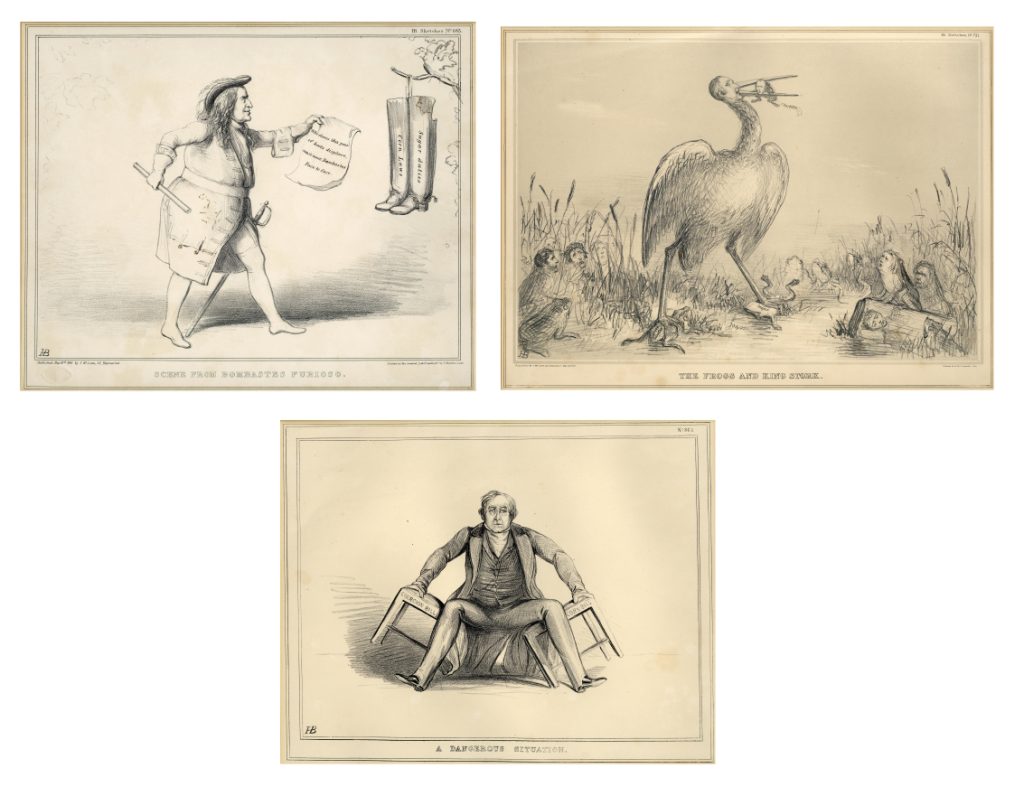
| This collection of three satirical cartoons relates to the repeal of the Corn Laws in the 1840s and comments on the actions of the Prime Ministers of the time, William Lamb and Sir Robert Peel. The Corn Laws were instated in 1815 and raised the price of foreign grain to support the domestic agricultural industry. This was repealed in 1846 due to the high food prices the laws caused. |
The artist is John Doyle, grandfather of Sir Arthur Conan Doyle, using the pen name H.B. and whose identity was kept entirely secret until revealed in 1843 in an extensive letter he wrote to Sir Robert Peel. These prints are part of the republication series done by Thomas McLean due to the popularity of Doyle’s works.
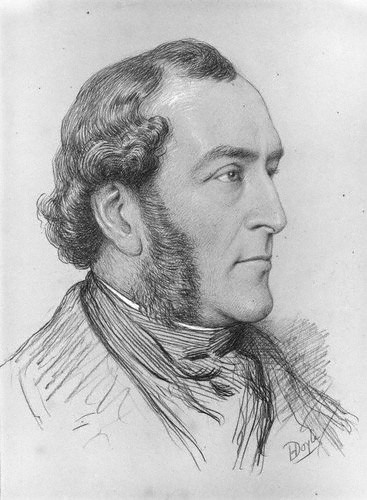
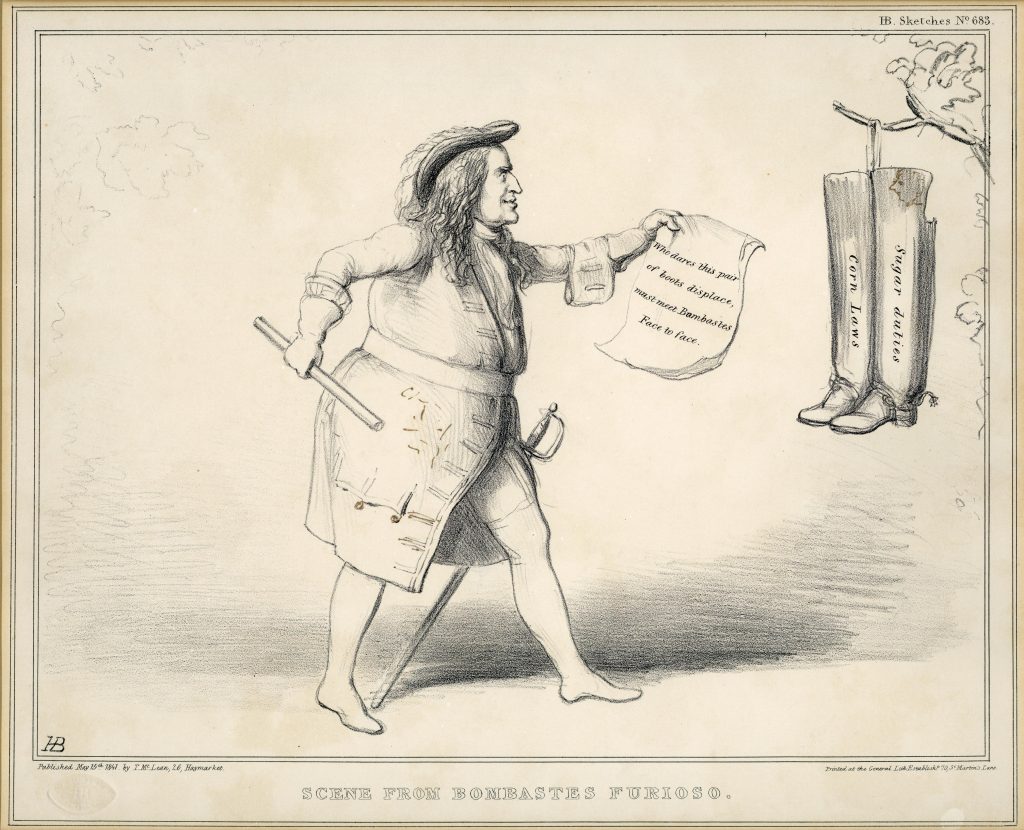
Scene from Bombastes Furioso, John Doyle, 15 May 1841 (Mills Archive Collection, MMAC-IMG-009)
| The first sketch is from 15th May 1841 and is based on a famous scene from William Barnes Rhodes’ opera, Bombastes Furioso. The image shows the general, Bombastes, with his boots hanging from a tree and waving the sign he places beside them which reads ‘Who dares this pair of boots displace, must meet Bombastes face to face’. The general is intended to be William Lamb defending to the death (in other words his impending resignation only a few months later) the Corn Laws and Sugar Duties which are written on his boots. |
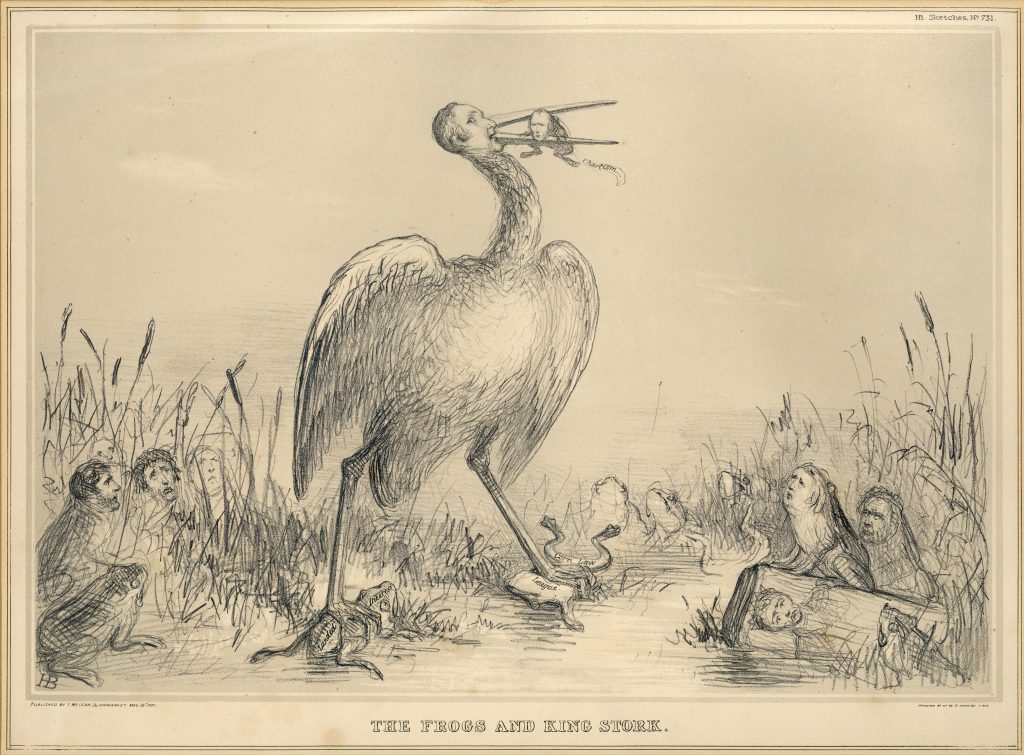
The Frogs and King Stork, John Doyle, 26 May 1842 (Mills Archive Collection,
MMAC-IMG-010)
| The second sketch is from 26th May 1842 and is this time showing one of Aesop’s fables, ‘The Frogs Who Desired a King’. To summarize the story, the frogs demand a king from Zeus and are given a log which they jump on and make fun of, but when their wish for a new king is granted, they are all eaten by it; in some cases, this creature is a water snake, but a stork is also common. The new king of this cartoon is intended to be Sir Robert Peel and he is shown crushing two frogs titled ‘Corn Law League’ and ‘Landed Interest’. These relate to the rebellion against the Corn Laws and secondly the large estates owned by rich families. A third frog is being consumed which is named ‘Chartism’ which was a working-class movement started in 1838 campaigning against injustice in the industrial and political systems of Britain. The prior king on the log would likely be referring to William Lamb the previous Prime Minister who lost a vote of no confidence and resigned in 1841. |
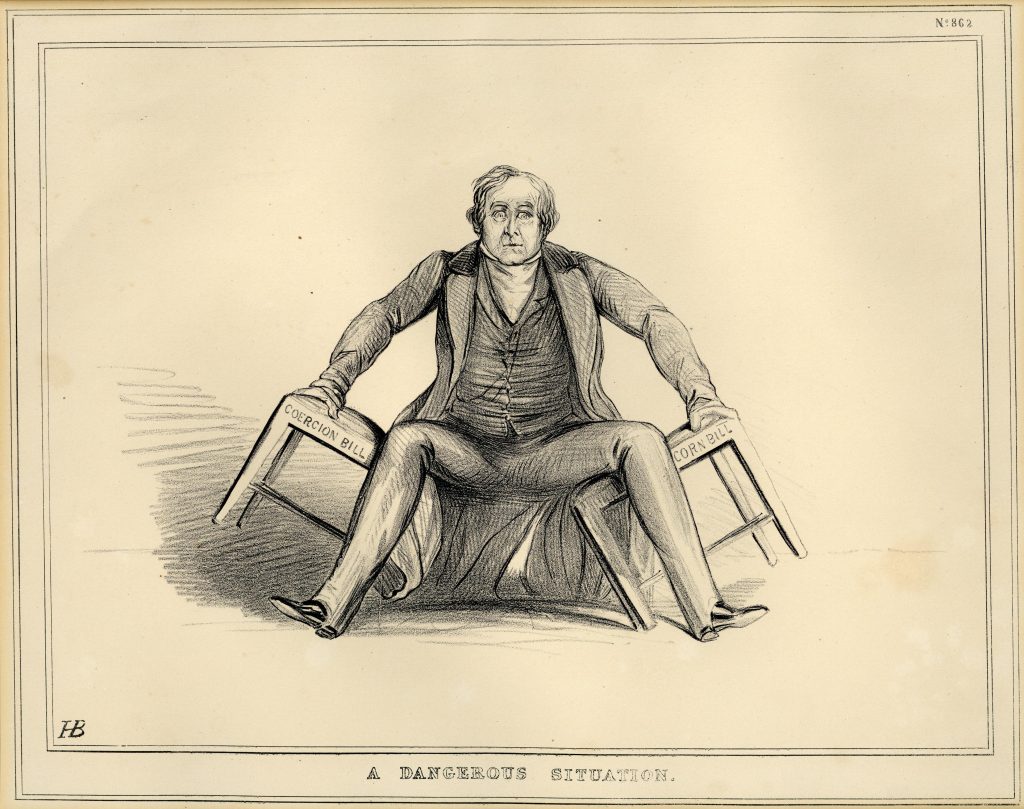
A Dangerous Situation, John Doyle, 1846 (Mills Archive Collection, MMAC-IMG-011)
| The final sketch is not dated but is likely close to 1846 when the Corn Laws were repealed. It shows the end of Sir Robert Peel’s career as he slips between the ‘Corn Bill’ and ‘Coercion Bill’ which ultimately led to his resignation. |
Other images in the collection
| Here are some of the other artworks and photographs in the Millers’ Mutual Association Collection: |
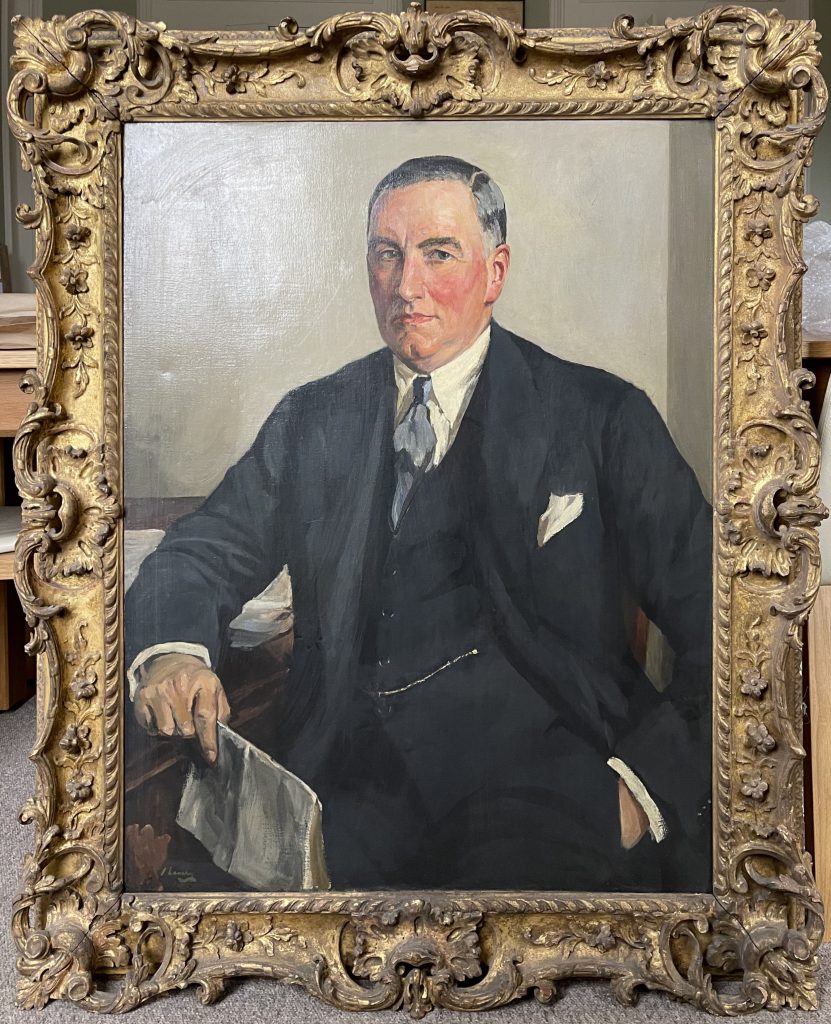
Painting of James Voase Rank (1881-1952), president of NABIM, by the artist John Lavery (1856-1941), Mills Archive Collection, MMAC-IMG-001

Group photo at the NABIM Annual Convention 1929, Barn Ridge, South Nutfield, Surrey (Mills Archive Collection, MMAC-IMG-005)
| As the close up below shows, a dog unfortunately chose to run across as the image was being taken! |
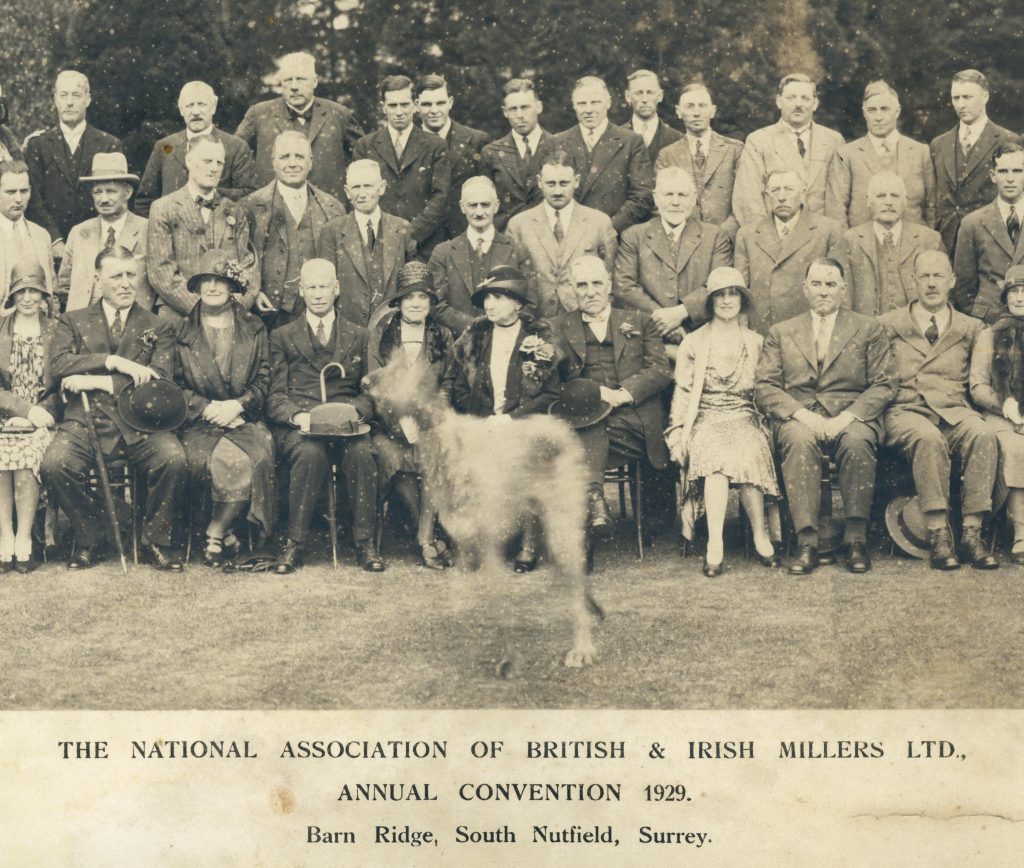
| We haven’t worked out what the cartoon below is in reference to – if anyone can help, please let us know! |

May the crow’s caws give way to the dove’s coos, not forgetting the bill! Early 20th century (Mills Archive Collection, MMAC-IMG-012)
| You can see all these images and more on our catalogue: https://catalogue.millsarchive.org/artworks-and-photographs |
